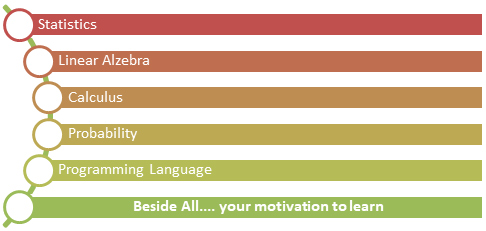Joy Chowdhury writes on how professional and skill development training is crucial for enhancing one’s employability. Graphic: Saubhik Debnath
Skills and knowledge are the engines of economic growth and social development of any country. Countries with higher and better levels of knowledge and skills respond more effectively and promptly to challenges and opportunities of globalization.
“Education, vocational training and lifelong learning are central pillars of employability, employment of workers and sustainable enterprise development”
– International Labour Organisation
A ‘Young’ Nation
More than 60 percent of India’s population is in the working age group and more than 50 percent of the total population is below 25 years of age. It is estimated that the average age of the population of India in 2020 would be 29 years, as against 40 years in the USA, 46 years in Europe and 47 in Japan.
Keeping in mind this enormous number of workforce in India, the youth need to be equipped with necessary skills and education. The country presently faces a dual challenge of severe paucity of highly-trained, quality labour, as well as non-employability of large sections of the educated workforce that possess little or no job skills.
As compared to other developed and developing countries, India has a unique window of opportunity for another 20+ years called the “demographic advantage”. If India is able to skill its people with the requisite life skills, job skills or entrepreneurial skills in the years to come, the demographic advantage can be converted into the dividend wherein those entering labour market or are already in the labour market contribute productively to economic growth both within and outside the country.
Professional and skill development training would be crucial for enhancing the employability of individuals, by facilitating the individual’s transition into the labour market. The present skilled workforce in India is only 2 percent, much lower than the developing nations Korea (96 percent), Japan (80 percent), Germany (75 percent), UK (68 percent) and China (40 percent) as reported by the Labour Bureau report.
With more than half a million engineering graduates every year, the Federation of Chamber of Commerce states, 64 percent of the employers are not happy or satisfied with the educated workforce. It is imperative to focus on the development of the professional skills for Indian labour force to become eligible enough to fit into the Industry Market requirement.
We also need to understand that the Indian workforce is extremely talented and immensely adaptable. In order to develop this workforce, we need structured Skill development and vocational Training.
The skill development framework in India is skewed towards a formal education system with limited profession or skill development training. While the skill development training is in a dreary state both qualitatively and quantitatively, the higher education system itself is struggling with issues related to scale and quality.
Moreover, there is a serious disconnect between the formal education system and work requirements, thereby increasing the challenges related to the skill gap. An intensive action is required on the supply side to safeguard sustained employability of the Indian youth thus transforming the skill development ecosystem and making it more cohesive to needs of both industry and the workforce.
School of Professional Studies at Adamas University is focused in creating a scalable, comprehensive and efficient Skill development framework to cater to the future requirements.
We vision to create an island of excellence in the sea of mediocrity.
Skill development
Skill development refers to the identification of skill gaps and developing the existing skills to enable a person to achieve his/her goals. The current generation lacks the much needed skills and there is a humongous gap between the skills existing in a person and the skills demanded by the industry.
The word Skill is apparently intangible but following definitions are presented for its different facets.
“The ability, coming from one’s knowledge, practice, aptitude, etc., to do something well”: (Carpentry is one of many skills).
“Competent excellence in performance; expertness; dexterity”. (Girls have special ability in embroidery work). [www.library.ucla.edu]
“An ability and capacity acquired through deliberate, systematic, and sustained effort to smoothly and adaptively carry out complex activities or job functions involving ideas (cognitive skills), things (technical skills), and/or people” (interpersonal skills).
“A skill is learning to carry out a task with pre-determined results often within a given amount of time, energy, or both”.
In a nutshell, skill can be defined as a competency needed to perform any kind of task and related to activities and people.
Let’s have a quick look at why is it so important
Skill development is an integral part in the overall development of a student.
For Better Opportunities: As we have earlier discussed on the Skill Gap, it is evident that skill development would create wider scope in the professional field. Introducing skill training and encouraging the students will also help in providing equal opportunities.
Multiple Career prospects: Introducing skill development initiatives for the college students will help them to get an understanding of multiple career options. This will help them to plan their future and achieve their goals.
Preparation for the Future: The process of skill development introduces the students to employability-skills at a very young age, thus ensuring the right development of the students.
Personal development skills are empowering skills; they would not only increase the opportunities but also empower an individual for life. Skills like networking and communication would go a long way in helping the overall development of a person.
Nurture talents: Skill development helps to identify, develop and nurture talents and skill sets in a given field.
Skill Development during your College Education
A student spends their maximum time in their College or Universities and that is where the true skill development would happen. The skill development training focused at their career planning should get a head start in their college campuses. Skill development can also take place in the classroom by engaging the students in the entire learning process. There are multiple concepts that the teachers can make use of, like experiential learning, project-based learning, activities for students, and peer to peer interaction. In fact, the right time to start building skills would be during their student life, we can create more meaningful and empowering skill developmental programs for life.
Professional Skills that need attention:

In today’s fast paced, rapidly changing global business scenario, it is imperative that the students are well equipped and trained on the following few professional skills.
There are many skills that a person needs to inculcate, of which there are skills that need to be given priority as these skills direct a person’s life and success.
Skills sought by graduate employers across the globe include teamwork, communication, planning and organizing, problem solving, and so forth. Some skills overlap with one another, Leadership, for instance, encompasses a number of other skills including decision making, verbal communication, planning, organizing, and collaboration.
- Communication
- Problem Solving
- Digital Literacy
- Interpersonal Skills
- Empathy
- Business Acumen
- Analytical Ability
- Negotiation and Persuasion
- Leadership
If we are looking at the demographic advantage, we have got our students prepared and skilled to face tomorrow’s professional world. At this juncture, it would be appropriate to state that School of Professional Studies would be ‘the arrow in the quiver’ for creating a skilled workforce.
The writer is Assistant Director, Center for Professional Studies, Adamas University. He is an eminent Leadership Development professional, a motivator and an emotional intelligence coach. A double post graduate in English Linguistics and Management along with a Masters in Psychology, he has been awarded an honorary doctorate in Psychology by University of Swahili Foundation, Panama. Joy had been a Guest Lecturer with multiple universities across Europe and the US.
This blog was first published by ABPEducation. Click here to read original article.























